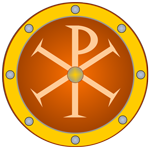
Capture of Ani |
year: 106416 August 1064 |
| Siege and capture of the Armenian city Ani by the Seljuk Turks | ★ ★ ★ ★ ★ |
|
enemy: Seljuk Turks
|
location: At the medieval city Ani, on the present-day Armenian-Turkish border at Kars
|
accuracy:
●●●●●
|
|
battle type: City Capture |
war: Seljuk Wars |
modern country:
Turkey |
| ▼ The Byzantines(emperor: Constantine X Doukas) | ▼ The Enemies | |
| Commander: | Duke Pangratios | Sultan Alp Arslan |
| Forces: | ||
| Losses: |
| Background story: |
| The city of Ani or Anion, located on the present-day Armenian-Turkish border at Kars at an altitude of 1,464 meters, was the capital of the medieval kingdom of Armenia. It was an important city, known as “the city with 1001 churches”. At its peak, in the 10th century, its population may have reached 700,000 (!), while it was a commercial crossroads and a station on the Silk Road. Moreover, it was a fortress guarding against the invasions of “barbarians” from the East. In 1045, the kingdom of Greater Armenia was annexed to the Byzantine Empire on the basis of an earlier agreement made during the reign of emperor Basil II. After that, Ani became the capital of the Byzantine duchy of “Iberia and Greater Armenia”. In the following years, the governors of the province (who had the title of “Duke”) were usually Armenian nobles who followed the doctrine of Chalcedon. In the meantime, around the same time as the annexation of Armenia, problems began with a new horde, the Seljuks, who in 1048 destroyed the Armenian city of Arge. The raids intensified especially after 1055 causing desolation in the northeastern provinces. In the early 1060s, a certain Pangratios became Duke of Ani. He had asked Emperor Constantine X Dukas for this position with the promise that under his rule the duchy would not burden Byzantium financially. The emperor gladly accepted this arrangement. In order to cope financially, Pangratios imposed taxes, causing dissatisfaction among the population and he was also forced to cut defense spending by reducing the number of soldiers. Soon there was a shortage of supplies due to financial hardship and a very bad climate was created between the locals and the Byzantine administration. In 1064, the new Seljuk sultan Alp Arslan had just succeeded in consolidating his power and sought to expand the borders of his territory starting from the neighboring rich regions of Armenia and Iberia. He began preparations for a campaign by equipping his army with siege engines, for which he recruited experienced Arab and Persian technicians. |
The Battle: |
 the remains of the walls of Ani in a 1885 drawing At the beginning of July 1064, these two Turkish armies converged on Ani. The siege lasted 25 days with continuous attacks by the Turks. The defenders were in difficult position as they were scarce and unprepared. Moreover, there was a shortage of supplies, the relations between the commanders and the population were bad, and there was personal enmity between Pangratios and the other military commander, Gregory Pakourianos (who was probably the duke of neighboring Theodosioupolis). The only things that could save the city were its strong walls, which, however, were quickly damaged after the undermining done by the Turks with underground tunnels combined with the use of the siege engines. The city fell on August 16, 1064 when the defenders of the walls left their positions. The Byzantine garrison was fortified for a while on the citadel, but it soon fled as well. The city was looted and the population was slaughtered. The Arab historian Sibt ibn al-Gawzi, quoting the descriptions of an eyewitness, narrates: The army entered the city, slaughtered the people, looted, burned, destroyed and enslaved all those who had survived ... The corpses were so many that the roads were blocked and no one could go anywhere without stepping on them. The number of prisoners was not less than 50,000 ... I tried to find a street on which I could walk without stepping on the dead, but it was impossible... |
Noteworthy: |
| The large silver cross of the cathedral of Ani was removed and placed on the doorstep of the Nakhichevan mosque (now an autonomous region of Azerbaijan) so that worshipers entering the mosque could step on it. |
Aftermath: |
| The fall of Ani was a milestone in the conquests of the Seljuks and caused great shock to the Byzantines, while it made an impression on the entire Muslim world. The city was inhabited again but it never became what it was. In 1072 the Seljuks sold Ani to the Sandidids, a Kurdish tribe. In the following centuries, the city changed hands many times until it was abandoned in the 18th century. |
|
|
